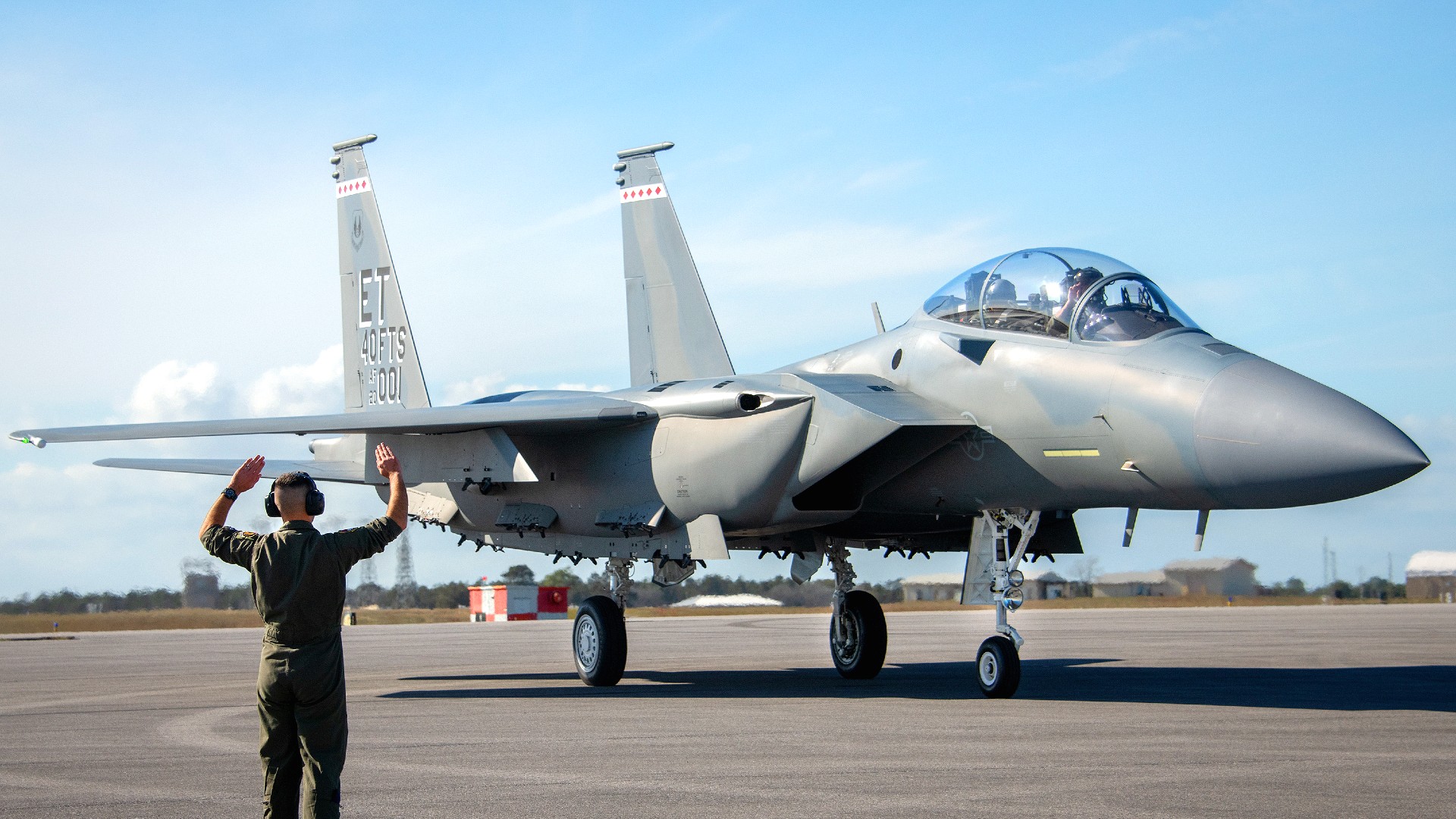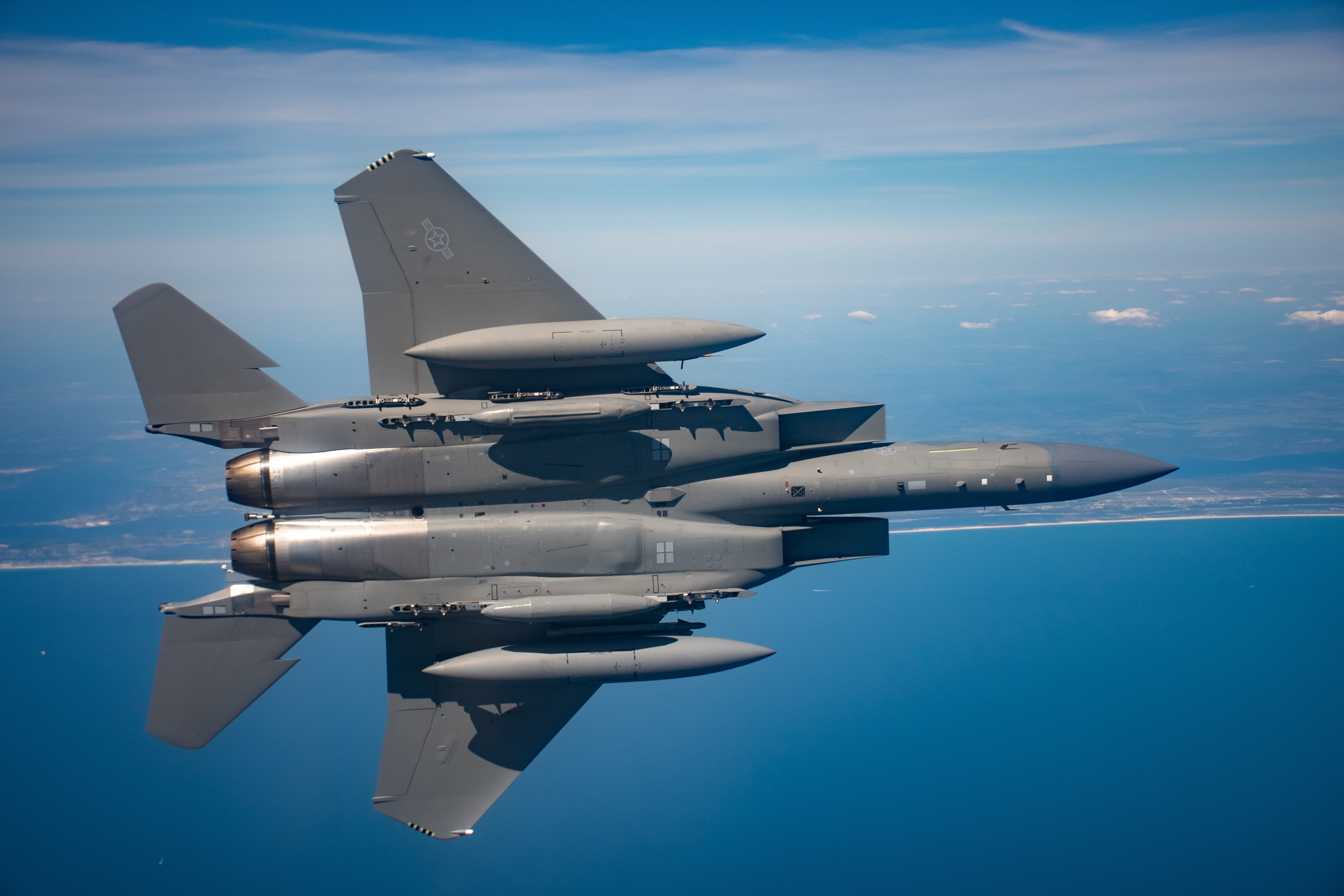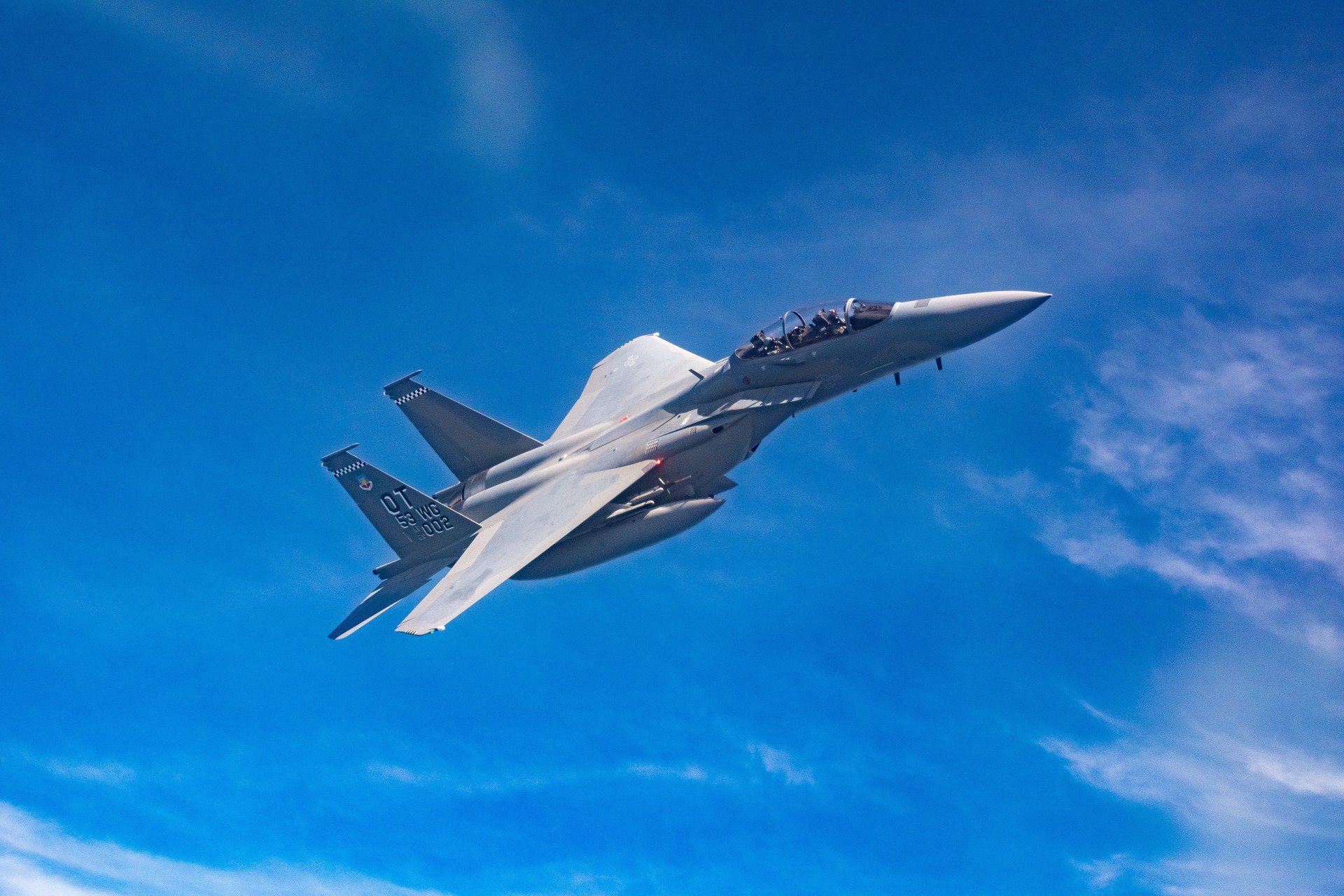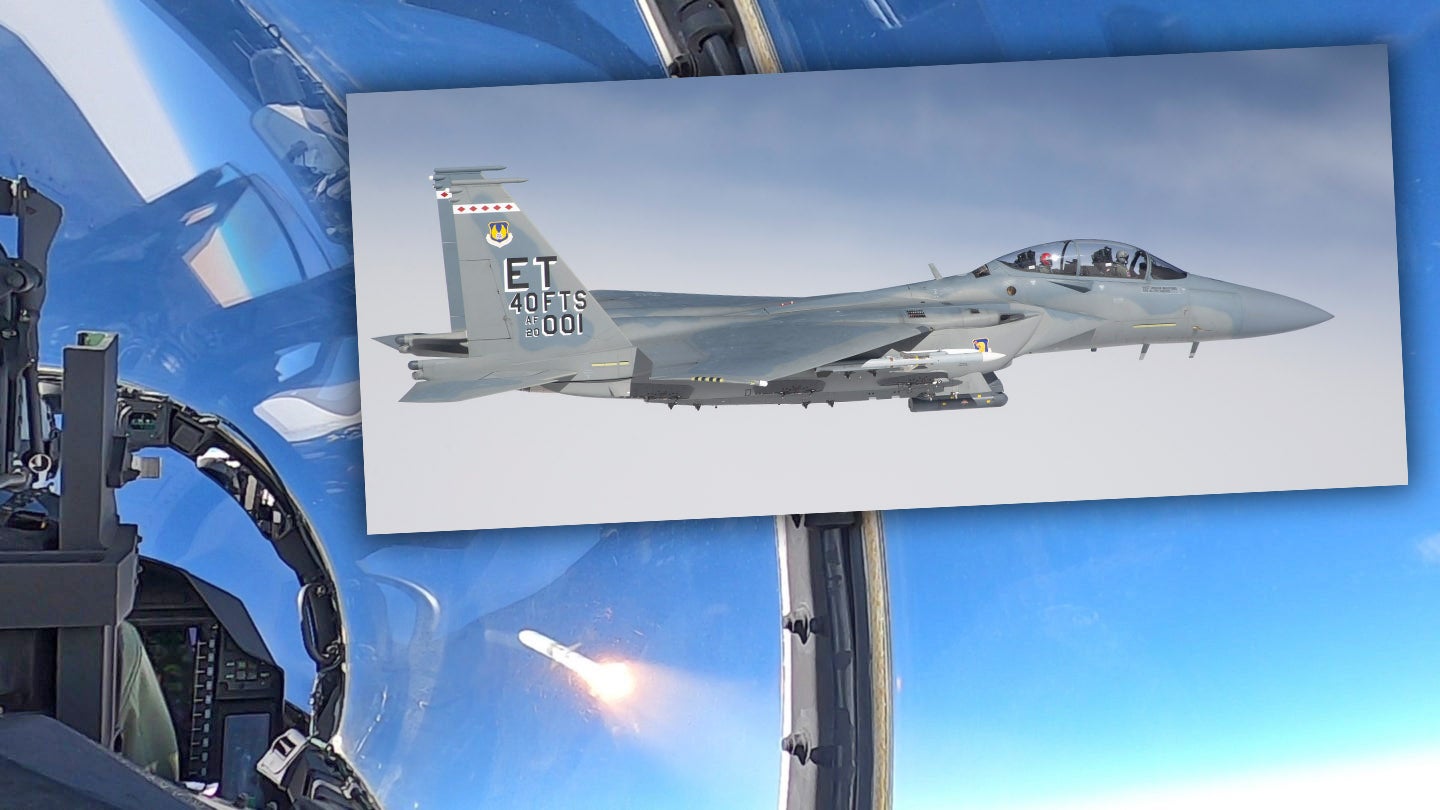The U.S. Air Force’s new F-15EX Eagle II, has successfully conducted its first live-fire weapons test in what the service is calling an “end-to-end verification of the entire weapons system.” At present, the service expects the Eagle II to replace its aging F-15C/D aircraft, adding new and highly-valued capabilities to the Air Force’s fighter fleet, such as the ability to control advanced drones and possibly carry hypersonic missiles.
The Air Force announced the milestone in a press release today. In this recent successful test, conducted on January 25 over the Gulf of Mexico, one of the service’s two Eagle II prototypes fired an AIM-120D AMRAAM missile at a BQM-167 aerial target drone. The aircraft in question is assigned to the 40th Flight Test Squadron at Eglin Air Force Base Florida. The missile launch was conducted as part of the Combat Archer air-to-air Weapons System Evaluation Program (WSEP), which is managed by the 53rd Wing, also at Eglin. You can read all about how and why WSEPs are conducted and just how important they are to proving and enhancing tactical airpower’s readiness in this past special feature of ours.

During the event, the F-15EX used its onboard sensors, which include the hugely powerful AN/APG-83 AESA radar, to acquire a weapons-quality track and initiate the missile’s launch, according to the Air Force. During the test, the Eagle II released the missile, which then flew toward the target drone, but did not impact it. “The shot was determined [to be] a WSEP success, at which point the missile flight was terminated,” the official press release says.
Colton Myers, the F-15EX test project manager with the Operational Flight Program Combined Test Force, said this first weapons test showed the Eagle II was “completely capable of fulfilling its expected air dominance role” and “will pave the way for more complex missile shots in the future.”

The test also marked the first live missile fire for test pilot Maj. Benjamin Naumann, who said the successful shot moved the Eagle II closer to deployment.
“I am humbled to have the opportunity to fire the first weapon, but the bigger success is the verification of the F-15EX capability to live-fire a missile,” Naumann said. “This shot is another important step towards fielding the aircraft to combat units.”
Last year, the USAF scored what was called the “longest known air-to-air missile shot to date” when an F-15C destroyed a BQM-167 target drone with an AIM-120D over the Gulf of Mexico, again involving test units from Eglin Air Force Base. The exact distance of the record-setting shot, which took place during a different WSEP event, was not disclosed.
However, the AIM-120D used in this recent F-15EX live-fire test is known to offer considerably more range than previous variants. Its official performance data is classified, but the missile is assumed to be able to hit targets from between 75 and 100 miles away depending on the state of its launching aircraft. In May 2021, Air Force Magazine revealed a series of Air Force talking points that revealed the new fighter would carry an “outsize air-to-air weapon,” but it remains unknown exactly which weapon those talking points referred to, although there are a number of possibilities that are in development now.
The War Zone first broke the story of the existence of the Boeing F-15EX. At the time, it was still designated as the ‘F-15X.’ The Department of Air Force awarded a contract for the F-15EX in 2020, awarding Boeing close to $1.2 billion for eight aircraft. The aircraft made its first flight shortly after that in February 2021 with a Boeing test pilot behind the controls, and weeks later appeared in Air Force colors while being flown by a USAF pilot. In April 2021, the Air Force announced that the jet’s official name was Eagle II.

The Air Force intends to eventually acquire at least 144 of F-15EXs in order to replace the aging F-15C/D Eagles which entered service over forty years ago. As of April 2021, some ten percent of the current F-15C/D fleet was grounded due to structural issues, and over 75 percent had exceeded their planned service life. The final class of F-15C fighter pilots graduated from the Weapons Instructor Course at the Air Force Weapons School last year.
To bring the F-15 fleet more up-to-date with current technologies, the F-15EX is being designed around what is known as an Open Mission Systems (OMS) architecture, which allows new capabilities and systems to be quickly added in the future. The F-15EX also features a sophisticated new electronic warfare system, fly-by-wire flight controls, an advanced mission computer, a low-profile heads-up display, expanded weapons carriage, updated radio and satellite communications, APG-82 AESA radar, a totally revised cockpit with wide-area displays, and more.

What the F-15EX does not have is a significant degree of low observability, which suggests the Eagle II will team with stealthier fighters or unmanned combat air vehicles in the future for some missions. But at its core, the F-15EX will mainly serve Air National Guard units that protect America’s maritime borders with a far more reliable and advanced mount than they currently have in the F-15C/D. The head of Air Combat Command has called the F-15EX “the most affordable and immediate way to refresh the capacity and update the capabilities provided by our aging F-15C/D fleets.” The F-15EX has an airframe life of a whopping 20,000, two and a half times that of the F-35.
You can read more about the capabilities of the F-15EX in these past War Zone pieces.
Aside from replacing aging F-15s, the F-15EX is being eyed for roles carrying future hypersonic missiles, a capability that will only become more important as concerns about the peer-state threat in the Pacific from China are growing. Its two-position advanced cockpit, range, and potential bold-on networking capabilities will also make it an ideal candidate to become a forward drone control platform for manned-unmanned teaming. This is in addition to all the other things the standard advanced F-15 can do, which is pretty much the full spectrum of tactical fast jet air combat. There is also discussion about using the F-15EX to replace the F-15E Strike Eagle fleet, which has a very different mission set from the F-15C/Ds, to include air-to-ground strike missions.

This latest missile test is only the most recent in a series of successful evaluations the Eagle II has undergone. The F-15EX flew 33 successful sorties at the Northern Edge exercises in Alaska in May 2021 and a series of operational missions that saw it paired with other USAF jets at Nellis AFB in October 2021. The F-15EX is now scheduled to undergo further testing and evaluation at Eglin before four more of the jets are expected to be delivered to the Air Force next year.
F-15EX test project manager Colton Myers added that the F-15EX program has made rapid progress thanks to the Air Force’s combined developmental testing (DT) and operational testing (OT) happening in parallel. “The combined DT/OT strategy has been critical to our test success, allowing us to break the mold of ‘traditional’ testing, while ultimately resulting in an overall better product for the warfighter, and in a shorter timeline than if we adopted the traditional approach. […] I don’t know of any other platform that has undergone such a rapid test program and it’s been incredible to be a part of the team that’s bringing this to reality.”
With this recent successful test fire, the F-15EX moves closer to its future as an important part of the USAF’s future fighter fleet.
Contact the author: Brett@TheDrive.com
